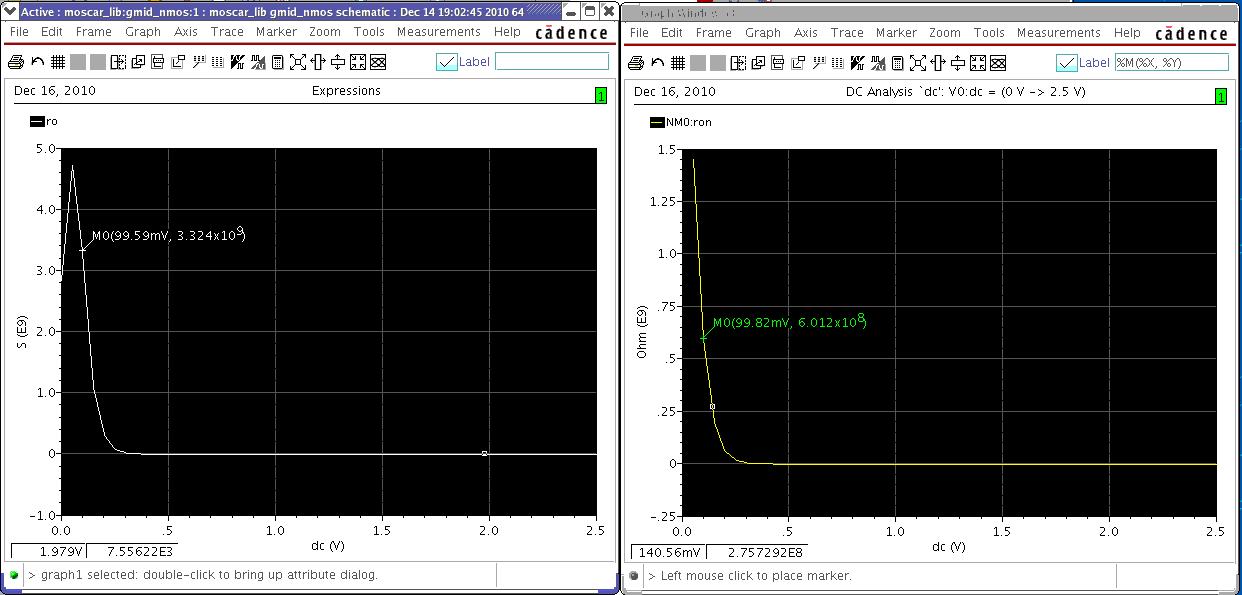peterlau1984
Junior Member level 1
ron gds
Dear all,
I found the statement in cadence document that "ron" is on-resistance, while "gds" is common-source output impedance. Both of them are operating point parameters. What is the difference between ron and 1/gds?
Furthermore, we usually caculate with the parameter "ro" during design, which is equivalent with "ro", "ron" or "1/gds"?
Thanks!
Dear all,
I found the statement in cadence document that "ron" is on-resistance, while "gds" is common-source output impedance. Both of them are operating point parameters. What is the difference between ron and 1/gds?
Furthermore, we usually caculate with the parameter "ro" during design, which is equivalent with "ro", "ron" or "1/gds"?
Thanks!
